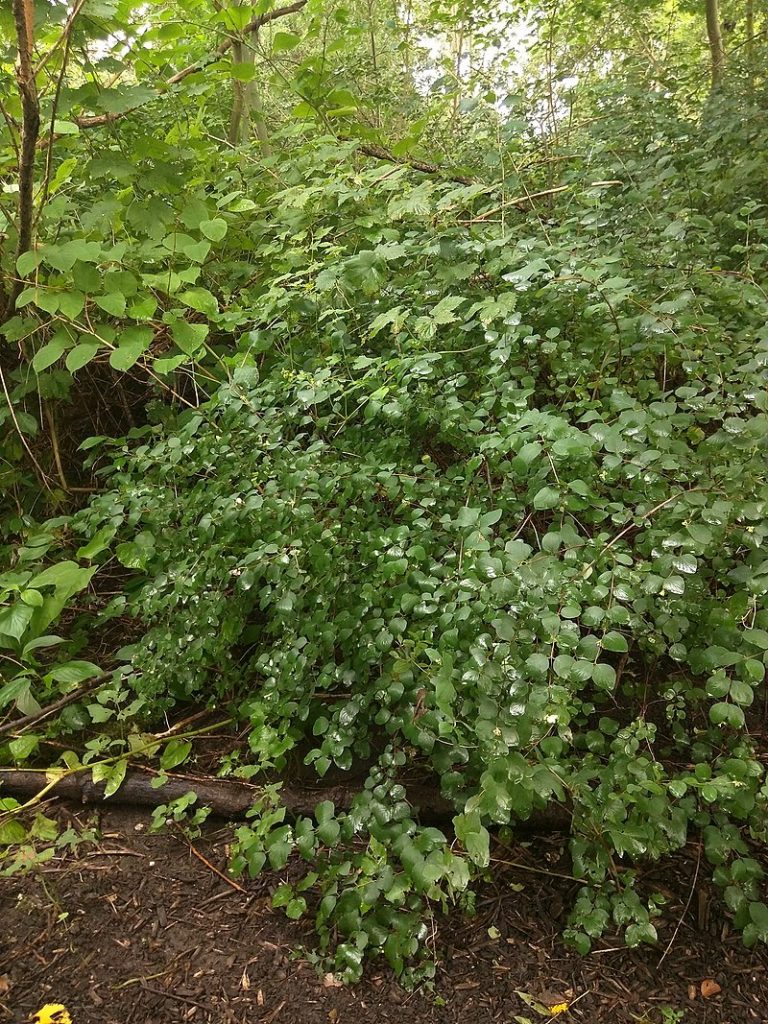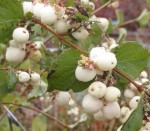
Also known as waxberry, this deciduous flowering shrub is a member of the honeysuckle family, Caprifoliaceae, that also includes weigelia, scabiosa, and abelia. It is native to North America where it grows in dry, open woods from Alaska and the Northwest Territories south to California and Colorado, and east to Virginia. Snowberry is a rhizomatous, much branched, twiggy shrub growing 3-6′ tall and wide and may spread to form a thicket. It has hollow hairy stems bearing opposite, dull green, oval leaves 1-2″ long that are sometimes deeply lobed. In summer, clusters of 2-16 small, pinkish white flowers appear in the leaf axils. They are bell-shaped, have white hairs inside, and attract butterflies and other pollinators. The green berry-like fruits that follow from September through November turn white with maturity, are about 1″ across, and contain 2 nutlets. They persist after the foliage has fallen and are attractive to both birds and mammals but are considered toxic, especially to children. In addition, wildlife use the plant for nesting and cover. The genus name, Symphoricarpos, comes from the Greek words συμφορέω (sumphoréō), meaning bear together and καρπός (karpós) meaning fruit, and refers to the fact that the fruit appears in clusters. The specific epithet, albus, is the Latin word meaning white, referring to the fruit color. Photo Credit Donald Hobern Wikimedia Commons

Type: Deciduous shrub
Outstanding Feature: Berries in fall
Form: Rounded
Growth Rate: Rapid
Bloom: Clusters of small, pinkish white, bell-shaped flowers in summer
Size: 3-6′ H x 3-6′ W
Light: Full sun to partial shade
Soil: Average, moist, well-drained; tolerates some dryness and alkalinity.
Hardiness: Zones 3-7
Care: Prune as needed in late winter to early spring
Pests and Diseases: Generally healthy but susceptible to anthracnose, leaf spot, powdery mildew, rust and berry rot.
Propagation: Stem cuttings
Outstanding Selections: None available
Photo Credit: Wikipedia